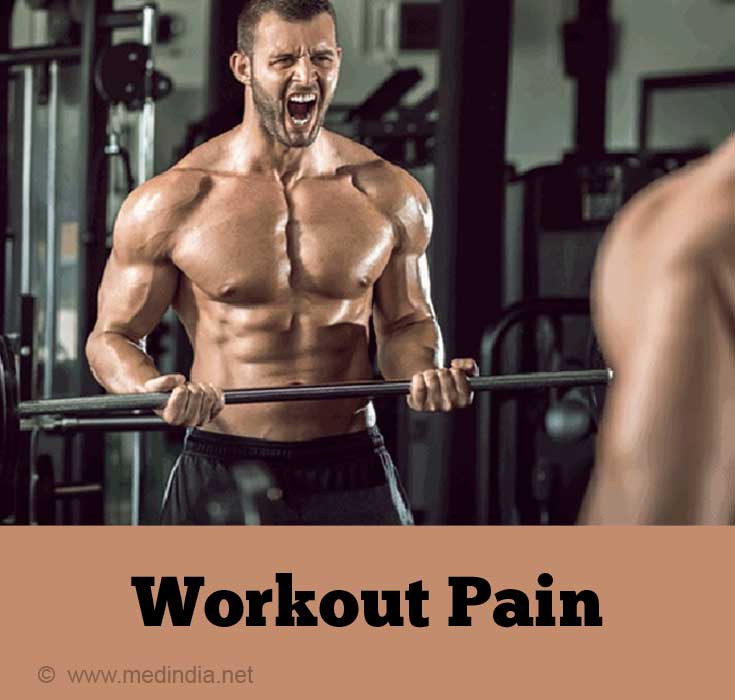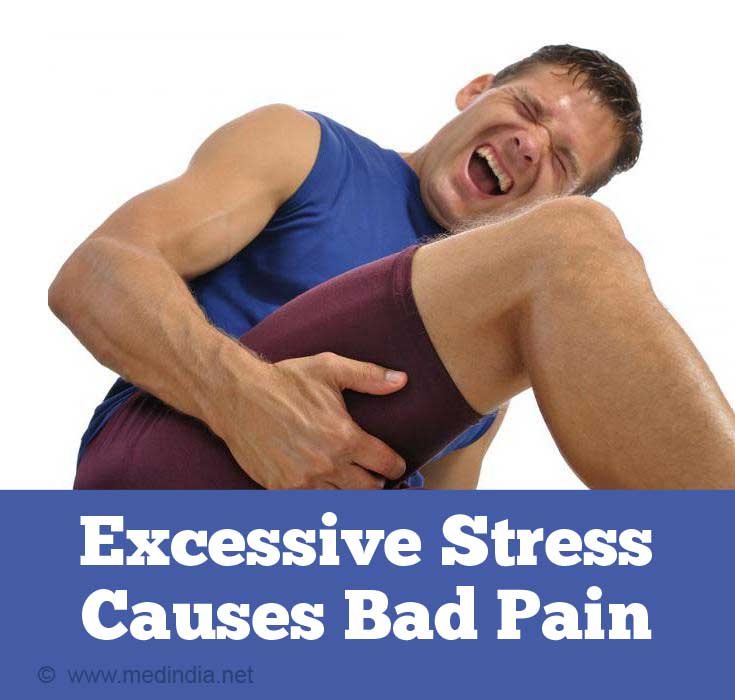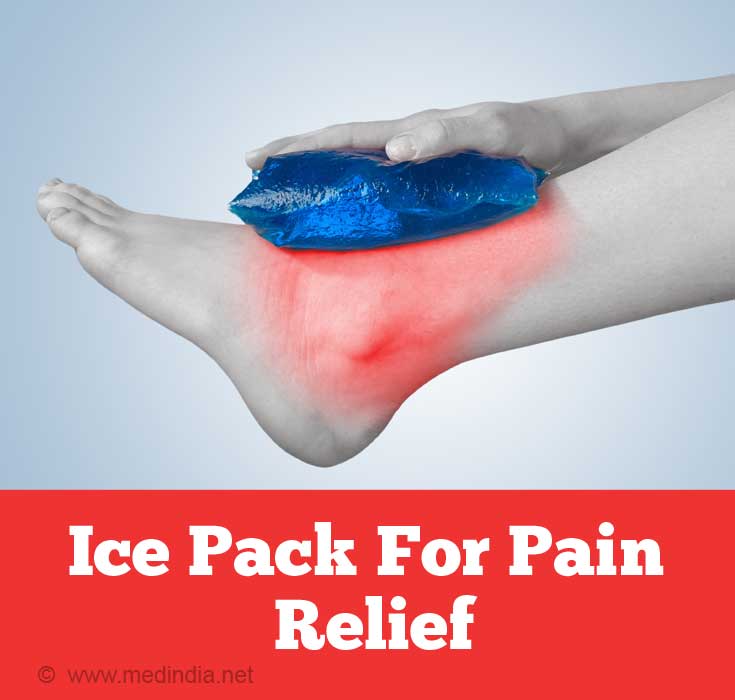- Why do I feel pain after exercise? - (http://www.nhs.uk/livewell/fitness/pages/why-do-i-feel-pain-after-exercise.aspx)
- Knopf, Karl. "Doing It Right." Total Sports Conditioning for Athletes 50 Workouts for Staying at the Top of Your Game. Illustrated ed. New York: Ulysses, 2008. 138. Print. - (http://www.nhs.uk/livewell/fitness/pages/why-do-i-feel-pain-after-exercise.aspx)
What is Workout Pain?
We’ve all heard the saying ‘no pain, no gain’ a million times, but repeating catchphrases a million times doesn’t make them any more or less true. Pain serves an important purpose, acting as a warning sign to let us know that we need to stop what we are doing and sometimes it’s just indicative of muscle growth. While one type of pain is obviously good, the other is bad and ignoring it can result in serious injuries. Discerning between good and bad pain isn’t always as easy as one might think and this is why an increasing number of young athletes and fitness enthusiasts suffer injuries because of overuse and exhaustion.

Good Pain
Pain is often glorified and almost embraced in some cultures and circles, but this isn’t always a virtue. Some amount of discomfort is to be expected from athletic or bodybuilding and fitness activities and is even necessary if one expects any improvement in performance.
Muscle strengthening and build up cannot occur unless it is subjected to increased stress over time. This increase in stress also causes some mild pain and discomfort or muscle soreness, which is perceived as ‘the burn’, hence the phrase ‘feel the burn’! Yes, fitness enthusiasts can be a sadomasochistic bunch, often glorifying and celebrating pain! But this mild pain or discomfort that is associated with muscle growth is good, and is probably one of the few instances in which pain is indicative of something good.
Such ‘good pain’ is usually temporary and only lasts for the duration of the activity, with mild discomfort or stiffness after the workout is done.
Understanding Good Pain
Muscle soreness and mild pain that are associated with muscle growth generally sets in after an intense workout, often 24 to 48 hours after the workout, and this workout pain can last for a few days. Sometimes this pain can be aggravating enough to make you want to quit the gym and head down to the nearest burger joint, but don’t give up just yet.

Although we don’t understand the precise causes for such soreness after workouts, it is believed that the training and resistance training in particular causes microtrauma within the muscles. This kind of training-induced muscle damage encourages new muscle growth during recovery that also helps you get buffed. So in such scenarios, the post-workout pain is good.
Post-workout soreness that affects the muscles, ligaments and tendons is rather common and is called delayed-onset muscle soreness or (DOMS). DOMS can affect anyone irrespective of your levels of fitness or your experience working out or the lack of it. The phenomenon may be alarming to those who’re new to gyming and working out, but it’s not something you need to worry about.
As your muscles adjust to the new demands they are being subjected to, they will strengthen and the pain will decrease quite rapidly. While some fitness enthusiasts embrace the pain and find it motivating, not everyone does and it may even be demotivating to those with a low tolerance for pain.
Tips to Cope with Good Pain
According to fitness experts, the saying ‘no pain, no gain’ isn’t entirely true, because you can get all the benefits of a workout without the pain. Here’s how you can avoid even the good pain if you’re squeamish about the discomfort:
- Start your exercise routine slowly and gradually increase resistance. This gives the muscles a chance to adjust to the workload and you’re less likely to experience any pain.
- Don’t forget the warm-up routine and stretching exercises; try to raise your body temperature before the workout. This helps prep the muscles for the stress they are soon to be subjected to.
- Dehydration is your worst enemy and the loss of electrolytes can aggravate soreness of the muscles. Try to boost your fluid intake, including electrolyte solutions, water and fresh fruit juices, while avoiding caffeinated and alcoholic drinks. If you don’t deal with pain too well, keep a cold compress or ice pack handy when you’re doing an intense workout. Cold compresses can help relieve pain and inflammation.

- A cardio workout is often underrated but it’s one of the most important aspects of any fitness routine. This can help get the blood flowing, improving circulation, thereby providing your muscles with a supply of essential nutrients and oxygen needed for them to recover and strengthen faster.
Most importantly, don’t panic if you experience muscle pain and soreness some hours or a day after your pain-free workout session. This is a good sign as it means the pain is undoubtedly because of muscle growth. Don’t give in to your feelings and instead keep working out. It is actually important that you continue with your workout routine and keep those muscles in action so as to encourage both growth and healing.
Don’t push it too much though and if the pain is too intense, exercise the other muscle groups.
Avoid taking painkillers or anti-inflammatories like paracetamol or ibuprofen as they may dull your sense of pain and you will not know when you’ve experienced or are causing a serious injury.
Bad Pain
Pain that lasts for several days after you’ve stopped your exercise activity is a cause for concern, especially if it begins to affect your sports performance or ability to workout. Good pain will always resolve within a couple of days at the most and will certainly vanish with rest. If there’s no respite from the pain even with rest, it’s not normal and you need help. If the pain from your workout session interferes with and hampers other activities like walking or disturbs your sleep it’s again a cause for concern. Any pain that does not respond to care and worsens over time should get you worried. If you experience any such pain, it’s no longer a good sign, but it’s a warning and you should visit your physician.
Understanding Bad Pain
Working out doesn’t just subject the muscles to stress and resistance but it also tests and strains the functioning of the tendons, ligaments, cartilage and bone. All of these structures respond and react to stress, and if the stress isn’t applied and built up gradually the response can be quite unpleasant. Excessive amounts of stress applied rapidly, without much chance for adjustment can cause failure. Subjecting your body to excessive amounts of stress while working out may not always show ill effects immediately, but the accumulated stress can still take its toll. When your workout begins to affect your body in such a negative manner you will experience what is called bad pain.

Tips to Cope with Bad Pain
As a fitness enthusiast, you wouldn’t be much good if you were robbed of your enthusiasm on account of an injury or pain that interferes with your workouts. To that end, it would be a good idea for you to pay heed to those tips to prevent, recognize and deal with bad workout pain:
- If you do not normally experience pain in a particular part of the body, but find that it surfaces when you’ve been trying out that new exercise routine, you should take a break from the activity. Speak to a trainer and find out if you’re performing the movements right, as biomechanical errors can be a common cause of bad pain and injuries.
- Good pain is never inclusive of joint pain. If you experience the pain in the joints while exercising or after your workout, pay heed to it. In this scenario, pain is a warning sign that’s telling you that you need to stop what you’re doing. If the pain is present even when you try different activities or with the exercise modified, it would be a good idea to consult your doctor.
- Localized pain is usually bad and a warning sign. If you’ve been doing a bench press repetition for example, the muscles of the chest and both arms are subjected to stress. The activity will affect all muscles equally. If you experience pain and discomfort in just one arm, you’re not ‘feeling the burn’ in a good way! It’s a sign that you’ve suffered some kind of muscle injury and need treatment.
- Pain that suddenly strikes without warning is always worrying. Good pain is never intense, sharp and stabbing. If you experience the pain of this nature you should stop what you’re doing immediately. Apply an ice pack for relief and if the pain is severe you can even take a pain medication like ibuprofen. Make it a point to get to your doctor after you’ve made some effort to relieve the pain.

- Sometimes you might be getting a bit too much of that ‘good pain’ and that just makes it go bad! Subjecting your body to excessive amounts of stress isn’t a good idea and in such cases, you will probably notice the pain from each workout simply carries forward to the next session without any respite, whether you’ve had a recovery period of one or four days. This means that you’ve overexerted to the point that your body cannot recover within the recovery paid.







